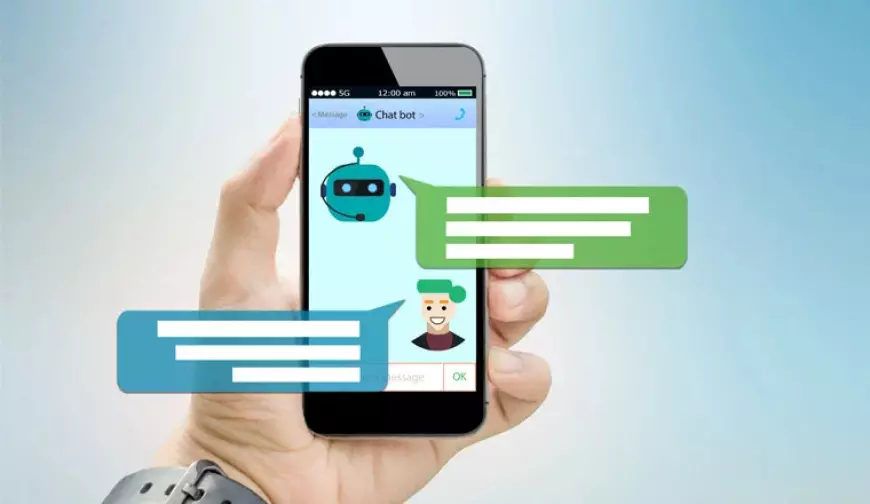What is a bot? Explained by Digimagg
A bot, short for robot, is a software program designed to perform automated tasks, ranging from simple to complex, on the internet.

What is meant by the term 'bot'?
A bot, short for robot, is a software application designed for Robotic Process Automation (RPA), performing tasks through a predefined set of instructions. Bots execute tasks with greater speed, accuracy, and volume compared to humans. Defining a bot involves examining its RPA script, which dictates its actions. For instance, crawl bots utilized by search engines navigate the web to gather new information, while spam bots are engineered to distribute unsolicited emails. Initially perceived as beneficial for handling complex calculations and algorithms efficiently, the perception of bots has evolved due to their exploitation by hackers for activities like spying and spreading viruses. Consequently, the contemporary understanding of bots often carries negative connotations.
A bot attack refers to a form of cybercrime wherein hackers employ automated scripts to cause chaos, extract data, or engage in other malicious actions. This type of attack poses a significant and potent threat to various digital endpoints such as websites, server systems, APIs, and beyond.
Automated bots pose a significant threat, allegedly accounting for roughly half of all internet traffic. Discerning between bot and human interactions can be challenging, yet understanding their functionalities and purposes can aid in avoiding deception and safeguarding against malicious bot infections.
Are bots beneficial or detrimental?
Bot software possesses the potential for both positive and negative outcomes. While numerous bots offer legitimate advantages to users, there are also those engineered to deploy spyware or pilfer sensitive information. A beneficial bot might swiftly address queries or furnish pertinent search results, whereas a malevolent one could engage in spear phishing.
Due to their effectiveness in carrying out illicit tasks, hackers frequently exploit bots. Bot attacks represent a form of cybercrime where hackers utilize automated scripts to cause disruption, steal data, or perpetrate other malicious deeds. These attacks present a highly efficient and perilous cybersecurity threat, capable of targeting diverse endpoints such as websites, server infrastructures, APIs, and beyond.
As advancements in bot technology unfold, novel bot variations emerge. Within the realm of computer bots, a plethora of types exists, spanning both legitimate and malicious categories, with some bots blurring the line between the two.
Understanding the Mechanisms of Bots
Bots typically operate based on a pre-established cue, such as a specific keyword or event, like a message dispatched on social media. Once activated, these internet bots interact with each other via online channels, executing predetermined tasks through automation, computer vision, and machine learning.
Automation involves task execution without human involvement, while computer vision aims to mimic and understand human visual processes using digital imagery and videos. Machine learning enables bots to recognize patterns in data and make adjustments accordingly.
The tasks performed by bots must adhere to rule-based and logical parameters, with clearly defined inputs and outputs. Tasks beyond a certain level of complexity are beyond the capabilities of a bot.
Varieties of Legitimate Bots
Certain bots are considered valid and contribute to enhancing website functionality and user experience throughout the internet. Conversely, there are bots that may appear legitimate on a technical level but operate within legal and ethical ambiguities, primarily serving the personal interests of their creators.
Below are several types of legitimate bots:
Crawlers

Crawl bots, also referred to as crawlers or web spiders, swiftly navigate the internet, systematically indexing all encountered content. This information is subsequently processed and relayed to a search engine provider such as Google. The indexing duration for new content can vary widely, ranging from a day to several months, contingent upon the crawler's potency and the depth of its exploration.
For instance, upon the publication of fresh content on a website, Google's crawl bots may take anywhere from a few hours to several weeks to index the new material, contingent upon the accessibility and indexability of the site by Google.
Chatbots

Chatbots mimic human conversation through text or voice and are commonly employed to address commonly asked questions or provide basic communication regarding a product or service, typically at a basic (level-one) interaction level. Examples of these chatbots include Apple’s Siri or Amazon’s Alexa, known as "knowledge chatbots" for their ability to provide general information.
In situations where a chatbot is under malicious control, it can potentially be utilized by hackers to engage in phishing activities or deceive individuals through social engineering tactics.
Transaction bots

Transaction bots facilitate financial transactions, performing tasks such as identity verification, credit card protection in case of theft, purchase completion, and other financial services. Entities like credit card processors, checkout systems, and PIN authenticators operate as transaction bots. Despite being highly secure due to their handling of significant volumes of sensitive financial data, transaction bots are prime targets for hackers seeking substantial gains.
Monitoring bots

Monitoring bots play a crucial role in ensuring the well-being of a website by detecting and notifying the site owner about bugs or vulnerabilities. They are akin to diligent workers in the realm of bots, continually inspecting a website and alerting the owner if any issues arise. Additionally, monitoring bots can be programmed to oversee user interactions on a website.
However, there are instances where monitoring bots may be utilized for intrusive purposes, such as spying on web visitors. Hence, it's advisable to regularly inspect and eliminate any spyware on your computer to safeguard against potential monitoring by webpages.
Scrapers

Scrapers, a subset of crawlers, systematically extract specific data from websites, a process often referred to as scraping. This scraping activity serves various purposes such as directing traffic to a website or presenting pertinent information to potential customers by aggregating their user data. However, scrapers can also be employed for nefarious intents, including content plagiarism or the illicit acquisition of credit card numbers.
Social media bots

Spam bots are automated software programs created to replicate the actions of human users on social media platforms. While social media bots have numerous valid and beneficial uses, such as delivering real-time weather forecasts and sports updates, they can also be employed for negative purposes, including trolling, disseminating misinformation, perpetrating cryptocurrency scams, and other fraudulent activities.
Shopping bots

Shopping bots automate the browsing and checkout procedures for online purchases, including searching for optimal deals and notifying the bot operator. One prevalent application of shopping bots involves purchasing large quantities of sought-after items upon release and subsequently profiting from reselling them. However, the utilization of shopping bots for this purpose is prohibited under specific circumstances, such as in the US market for concert tickets.
Varieties of Malevolent Bots
What constitutes legal and illegal bot usage varies. While certain legitimate bots may operate in ethically questionable ways, malware bots that harm computer systems, pilfer credentials, or engage in other harmful actions are unequivocally prohibited.
Below are examples of malicious bot types:
Spambots
Spambots disseminate infected content indiscriminately across various platforms, including email, websites, social media, and instant messaging applications. Some spam aims to spy on users or extract their data, while others may contain adware, bloatware, or other unwanted content.
Voice Bots
Voice bots represent costly hacking instruments employed by fraudsters to pilfer 2FA (two-factor authentication) or OTP (one-time password) codes utilized for securing private accounts. With the widespread adoption of 2FA and OTP codes for password retrieval and payment verification, individuals often lower their guard when prompted by a voice bot for their code.
To mitigate the risk of falling prey to voice bots, it's advisable to generate and utilize robust passwords and manage them securely with a reliable password manager.
File-sharing bots
File-sharing bots clandestinely monitor individuals' search queries and furnish counterfeit links purportedly leading to requested items. Upon clicking these links, devices can become infected with computer viruses or other forms of malware.
While evading these bots can be particularly challenging, effective antivirus software can identify viruses or malware programs in case of accidental clicks on infected links. In cases of more insidious malware, such as Trojans, employing a Trojan remover tool should effectively eliminate the threat.
Credential stuffers
Credential stuffing bots inundate numerous accounts with known or suspected login credentials in hopes of discovering a match. Following the acquisition of genuine credentials via data breaches or brute force attacks, cybercriminals unleash these bots to log in across various platforms.
DDoS bots
DDoS bots inundate a website with an excessive number of requests, aiming to overload it and cause a crash. By coordinating within a network of botnets, these bots can collaboratively target an entire website in a DDoS attack. Such attacks can effectively hold a website hostage until the hackers' demands are satisfied. Botnets cause significant disruption to businesses and are favored tools among numerous hacker groups.
Vulnerability scanners
Vulnerability scanners assess networks, individual devices, and apps for weaknesses that can be exploited. Vulnerability scanners are similar to monitoring bots, but are designed specifically to find security holes.
Click fraud bots
Click fraud bots, also known as click bots, fabricate artificial views for pay-per-click advertisements, social media posts, search engine results, and any other platforms that benefit from clicks for financial or algorithmic advancement. These bots simulate human clicks, creating the illusion of genuine engagement.
Sophisticated click bots can be programmed to perform additional human-like actions such as posting comments or engaging in other internet activities, deceiving website owners and advertisers into believing their content is more popular than it truly is.
Safeguard Your System from Bots with Avast
Protecting against bots requires robust anti-malware software from a trusted source.
Avast One incorporates an advanced firewall designed to identify deceptive bots effectively. With its comprehensive malware scanning capabilities, including the detection and removal of malicious bots, Avast One ensures your system remains secure. Additionally, it offers protection against viruses, ransomware, and unauthorized access by hackers, safeguarding your personal data.
With Avast's continuous monitoring, it remains vigilant against any bot intrusion attempts. Secure your system today with Avast One, available for free.
Preventing Malicious Bot Activities
Understanding cybersecurity principles is key to defending against bot attacks. Hackers often exploit victims' lack of knowledge about staying secure.
A reliable firewall serves as an initial defense against malicious bots, deterring many from penetrating your network. In case a malicious bot infiltrates your network, employing a VPN can help maintain anonymity. Additionally, acquiring a robust malware removal tool capable of scanning for and eliminating any malicious bots present on your device is essential for safeguarding your security.
Signs of Computer Infection
Malicious bots have the potential to infiltrate your computer through various, sometimes deceptive methods. Identifying signs of a virus or malware infection can be challenging, as they may resemble symptoms of general wear and tear on your system.
Indicators of a computer infection include:
- Unanticipated crashes
- Decreased performance speed
- Unusual applications
- Unwanted pop-up notifications
- Elevated noise from computer fans
- Missing files
- Difficulties with shutdown or restart processes
- Display of error messages
While other factors may contribute to computer crashes, establishing a practical security framework for your device can mitigate the risk of bot attacks.












































